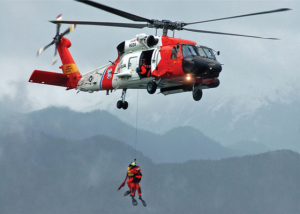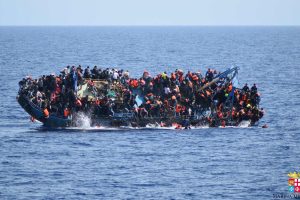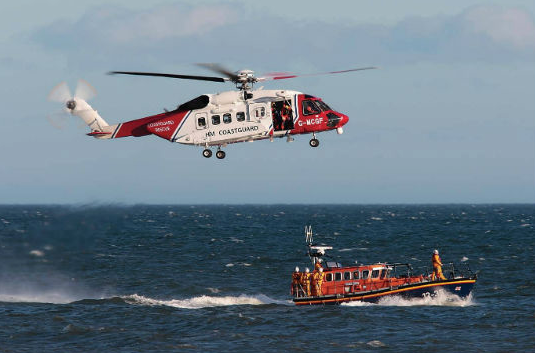With many of the worldʼs modern cities being squeezed for space, an increasing number of high rise buildings are being built. It is estimated that the top 10 high rise cities in the world account for over 6,000 skyscrapers (buildings over 100 meters) alone. Even in older, more established major cities in Europe such as London, Frankfurt and Moscow there are buildings being erected to previously unseen heights for both residential and commercial use.
During emergencies, the high-rise building presents several unique challenges not found in traditional low-rise buildings; longer egress times and distance, evacuation strategies, fire department accessibility, smoke movement and fire control. The multiple floors of a high-rise building create the cumulative effect of requiring great numbers of persons to travel great vertical distances on stairs or in elevators in order to evacuate the building.
Very few cities if any, have a coherent plan for rescuing high numbers of trapped occupants in the event of an emergency. It is generally accepted that conventional fire and rescue services have ladders and equipment that are able to extend and reach to around the 7th floor (approximately 30 meters) of a high rise building. In the event of a fire or terrorist attack such as those seen at the World Trade Centre in 2001, rescue services have to move up the building from within, get past the floor level at which the threat exists and then escort the buildingʼs occupants back down and once again have to deal with transiting through the threat area. With high rise buildings now reaching several hundred meters,there are thousands of buildings around the world with floor numbers in the hundreds – many floors higher than rescue ladders are able to reach.
Helicopters can and do offer a partial solution to these problems. Conventional helicopter rescue means a crew member being lowered on a winch, where they either assist on a one to one basis, or are able to lift up a casualty or trapped person – normally one at a time, but in extreme circumstances, two or maybe three, and carry them to safety where they can be treated or safely dispersed.

In the event where several hundred – or even thousands of people require rescuing, it would take an unimaginable amount of time to lift victims clear of danger using these methods and in all reality, would be impossible. Even in perfect conditions with a highly trained crew and expert facilities, it would easily take 6-8 minutes to reach, connect and carry a person to safety over even the shortest of distances.
It is accepted that helicopters offer the only realistic option for being able to reach and subsequently extract personnel from areas, buildings or structures that cannot be reached over land or through conventional access via stairs or elevators. Having already highlighted the time and logistical issues associated with conventional helicopter rescue, it is clear that using helicopters and combining them with expertise and equipment specially designed to tackle this very problem, is the key.

Having the ability to access and subsequently rescue larger numbers of personnel during each lift cycle would clearly increase the speed at which those evacuees can be carried to safety and to medical attention where required. However, it is often impossible to land a helicopter in a position where personnel can access and board the helicopter directly. The principle of lifting or winching them away from the danger area is therefore often still the only viable course of action.
Integral Risk Global has exclusive distribution and utility agreements with Heli-Basket LLC for the supply and training of Heli-Basket® systems for use in Multi Person Helicopter Rescue operations. Heli-Baskets® are an external human load rescue and logistical support transport system for light, medium and heavy helicopters.
The design is derived from the need to maximise the numbers of rescuees in a single lift cycle, and minimise recovery times during the life crtitical “Golden Hour”.
The equipment design is based on the lightest structure that demonstrates aerodynamic stability in flight, ease of entry, ease of delivery and recovery, and safety in land and sea operations.
There are two main Heli-Basket models – the 6 person lift HB1000 and to the 15 person HB2000. Exceptionally, the 30 person and 50 person HB3000 and HB5000 can be offered too, although helicopter lift performance and operational restrictions mean that the HB1000 and HB2000 are the more realistic options for civil emergency rescue.
Having the ability to rescue up to 15 people on every lift cycle in a similar timeframe that it takes to lift just one or two people using conventional equipment offers the potential to evacuate many times more people from a burning building or structure, thereby substantially reducing the likelihood of mass casualties.
EXTERNAL LOAD OPERATIONS
The key to successful external load operations is high quality, robust, reliable equipment and operators who are trained in the proper methods and use of vertical reference flying. Heli-Basket has developed the most advanced equipment available for Multi Person Helicopter Rescue. Together, Integral Risk Global and Heli-Basket offer the supply of Multi Person Helicopter Rescue equipment, whilst Integral Risk Global provides a source of operational delivery and training for all aspects of external load operations.INTEGRAL RISK GLOBAL SERVICES
- SUPPLY OF HELIBASKETS AND SUPPORT/ROLE EQUIPMENT
- HELI-BASKET® ROLE TRAINING
- HELI-ABSEIL AND FAST ROPING
- MILITARY (SF) INSERTION EXTRACTION
- CIVIL EMERGENCY
- MARITIME SECURITY AND RESCUE



